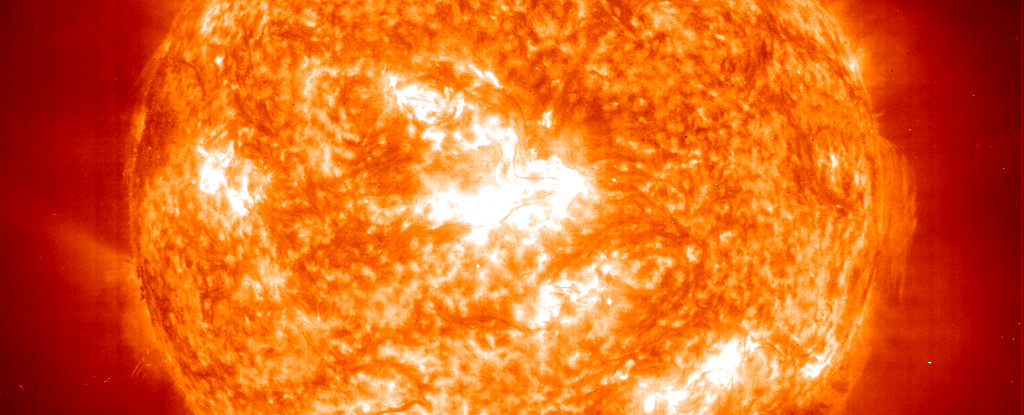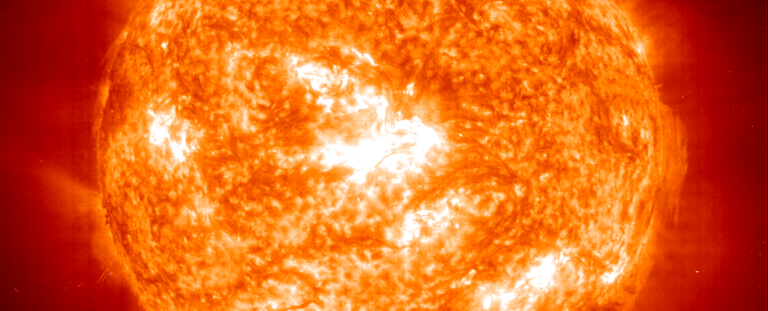Astronomers Charted The Sun’s Life, And This Is How The Story Ends
Our Sun will pass away one day.
The topic of when and how this will occur is very important to us since we live in the planetary system of the Sun.
Yes, we probably won’t be around to witness it. but it is our home, you know. We are curious as to what will ultimately happen to it. Aside from piqued curiosity, star evolution models can aid in our understanding of the universe and our role within it.

Astronomer Orlagh Creevey of the Observatory de la Côte d’Azur in France remarked, “If we don’t comprehend our own Sun – and there are many things we don’t know about it – how can we hope to understand all of the other stars that make up our lovely galaxy?”
What will transpire in the Sun’s future is something we already know in some detail. Over the next several billion years, it will continue to become hotter until its core ultimately runs out of hydrogen to fuse.
As the core begins to shrink, additional hydrogen is drawn into the area immediately around the core, creating a hydrogen shell. With the help of a process known as shell burning, this hydrogen begins to fuse and releases helium into the core.
The Sun’s outer atmosphere will significantly expand during this time, possibly reaching Mars’ orbit, transforming it into a red giant. Its core will eventually collapse down into a white dwarf, which might take billions of years to cool entirely, run out of hydrogen and helium, and expel all of its surrounding material to form a planetary nebula.
The date of the main sequence’s conclusion, however, is determined by the unique traits of each star. When it comes to our own Sun, the general timeline of when things will start to go wrong could always need more proof.
The simplest method to do so is to look for Sun-like stars in the Milky Way at various phases of their lifetimes and then weave them into a chronology that represents the history and future of our own star.
We now have the most complete history of the Sun’s existence according to the most recent data release from the Gaia Milky Way mapping mission of the European Space Agency.
Gaia has a variety of tools at its disposal to complete its core purpose, which is to map the Milky Way with the best level of accuracy ever. It keeps tabs on the locations and movements of the stars in the sky while making careful observations of their brightness and spectral type.
These numbers may be used to calculate variables like temperature and chemical composition. Additionally, they can be displayed on a Hertzsprung-Russell diagram, a graph that provides an estimation of the star’s age.
You see, a star’s mass doesn’t truly vary as it ages; yet, because of the nuclear fusion occurring in the stellar core, which is visible as fluctuations in brightness, a star’s temperature does alter dramatically.
Even though it isn’t literally yellow, our Sun is categorized as a G-type main sequence star, or yellow dwarf, and is a pretty typical example of its sort.
Its main sequence lifetime, which is almost halfway through, is 4.57 billion years old. A surface temperature of 5,772 Kelvin is produced by core thermonuclear fusion, another capability of the object. As a result, seeing other G-type stars should help us predict how long our Sun will continue to consume fuel and when it will inevitably stop.
In order to make precise measurements of stars with comparatively “lower” temperatures between 3,000 and 10,000 Kelvin, Creevey and her colleagues first began poring through the Gaia data. Because low temperature stars are often smaller and have longer lives than higher temperature stars, studying cooler stars may be able to shed light on the past and stellar development of the Milky Way and the larger Universe.
The data might be used to focus on stars with a comparable mass and chemical makeup to the Sun since this temperature range includes stars like the Sun. Over the whole Hertzsprung-Russell diagram, from very young to very old, this produced 5,863 Sun-like stars.
Creevey and her coworkers were able to pinpoint the precise moment of the star’s death by focusing solely on stars that closely resembled the Sun.
The Sun’s temperature will peak at around 8 billion years old, which is generally consistent with earlier predictions of its longevity. At about 10 billion to 11 billion years old, it will change into a red giant star.
For the record, life on Earth only has a few billion years remaining unless we make a fatal mistake or something terrible occurs to us. That’s because the Sun’s brightness is rising by around 10% per billion years, which implies that its warmth is rising as well. That seemingly little shift will make Earth unfit for life as we know it.
So that’s good news. But work still has to be done. We may learn more about how and why we came to be here thanks to the new Gaia database of stars that resemble the Sun. For instance, we can discover if Sun-like stars all exhibit the same behavior. Furthermore, search for additional planetary systems that resemble the Solar System.
We haven’t yet discovered a system that appears capable of supporting technologically advanced life in the way we understand it. But the solutions are available. if we can track them down.
Do not forget to share your opinion with us to provide you with the best posts !





0 Comments